by Jenuine Poetess
 There’s no denying that Spring is an inspiring season in Central Texas. Having grown up in the north where Spring was such an emotional event—hope, finally! after so much cold, ice, snow, and darkness—I never really put much stock in the changing of seasons in places like Texas. That is, until I lived here and experienced the sheer delight and joy of a riot of color as bluebonnets, Indian paint brushes, and primroses splash their vibrant adornments across the landscape.
There’s no denying that Spring is an inspiring season in Central Texas. Having grown up in the north where Spring was such an emotional event—hope, finally! after so much cold, ice, snow, and darkness—I never really put much stock in the changing of seasons in places like Texas. That is, until I lived here and experienced the sheer delight and joy of a riot of color as bluebonnets, Indian paint brushes, and primroses splash their vibrant adornments across the landscape.
So as robins with their plumb red bellies and beloved wildflowers are the harbingers of a Central Texas Spring, so too a calendar chock full of dynamic events is the artists’ first bloom of a new season!
 To kick off, the Heart of Texas Comic Con returns this weekend March 11-13th with artist vendors & live art-making on site, cosplay, food vendors, special guest appearances, and more there is something for comic lovers of every age! And be sure to stop by the Central Texas Artist Collective (CTAC) to say “hi!” to some of your favorite artists and community organizers living and creating in Waco!
To kick off, the Heart of Texas Comic Con returns this weekend March 11-13th with artist vendors & live art-making on site, cosplay, food vendors, special guest appearances, and more there is something for comic lovers of every age! And be sure to stop by the Central Texas Artist Collective (CTAC) to say “hi!” to some of your favorite artists and community organizers living and creating in Waco!
Also coming up this and next week are a number of Waco Poets Society (WPS) events including Nuestra Voz open mic on Saturday March 12th at 7:15pm at Rufi’s Cocina (which you may have seen in the most recent Waco Today!). Open mic is open to all creative expressions—poetry, story-telling, spoken-word, music, reflections, and more! On Tuesday March 15th, WPS is partnering with other artists to present Unsilent :: Survivor Stories, an evening of poetry & spoken word at  9:15pm at the Hippodrome on Austin Avenue in downtown Waco. This event is free and open to the public. There will be an opportunity to make a donation which will go to support the efforts of the Advocacy Center of Waco and the Family Abuse Center. In gratitude of the generosity of the Hippodrome donating their space for the event, attendees are encouraged to purchase concession items as a way to support our local business and make sustainable such partnerships between venue and programming! This event will have limited open mic spaces so please arrive at 9:15pm if you are interested in signing up to share 1 piece (2 minutes maximum).
9:15pm at the Hippodrome on Austin Avenue in downtown Waco. This event is free and open to the public. There will be an opportunity to make a donation which will go to support the efforts of the Advocacy Center of Waco and the Family Abuse Center. In gratitude of the generosity of the Hippodrome donating their space for the event, attendees are encouraged to purchase concession items as a way to support our local business and make sustainable such partnerships between venue and programming! This event will have limited open mic spaces so please arrive at 9:15pm if you are interested in signing up to share 1 piece (2 minutes maximum).
If you have things to share and were not able to get on the list at Unsilent, the next WPS open mic will be Thursday March 17th at Tea2Go Waco-Baylor on S. 7th street with sign-ups opening at 7:15pm. Again, this venue is open to music, poetry, story-telling, spoken-word, reflections, and more!
 This Saturday March 12th also marks the deadline for all art submissions for the annual Art on Elm neighborhood arts festival in East Waco Saturday April 9th from 10am-5pm. With live music, artist vendors, juried art exhibit, art activities, live art-making, food trucks and vendors this event is FREE and open to the public of all ages. Bring your friends, your family, your neighbors, and your funds to support local artists and enjoy the thriving creative culture Waco is growing! If you are an emerging artists looking to take the next step into exhibiting and selling your artwork, have a conversation with Angie or Steve Veracruz of CTAC; they will support you through the process and provide you with all the details and tools you need to soar! (Be sure to ask them about Paper Shoes the next time you see them!)
This Saturday March 12th also marks the deadline for all art submissions for the annual Art on Elm neighborhood arts festival in East Waco Saturday April 9th from 10am-5pm. With live music, artist vendors, juried art exhibit, art activities, live art-making, food trucks and vendors this event is FREE and open to the public of all ages. Bring your friends, your family, your neighbors, and your funds to support local artists and enjoy the thriving creative culture Waco is growing! If you are an emerging artists looking to take the next step into exhibiting and selling your artwork, have a conversation with Angie or Steve Veracruz of CTAC; they will support you through the process and provide you with all the details and tools you need to soar! (Be sure to ask them about Paper Shoes the next time you see them!)
If you’re looking for some music to enrich your palette, consider taking in a concert with the Waco Symphony Orchestra. On Saturday, March 19th, they will feature 16-year-old violin prodigy Fiona Shea who will join the WSO to perform Mendelssohn’s Concerto for Violin & Orchestra and the Waco Symphony Youth Orchestra–celebrating their 25th Anniversary. Tickets are available for purchase here.
Live theater may be more your style and if so, check out the Waco Civic Theater’s Spring production of The Great Gatsby…make a swanky evening of it and dress up in your own best attire. To stay up-to-date on the season or to learn about how you can audition for their next show, please visit WCT’s site here.
Maybe you’re more interested in kicking back in a casual setting with some good food and drinks and a great band. If so, check out the Spring line-up on stage at The Backyard and Common Grounds. Throughout this Spring, the Waco Hippodrome also has some live music offerings, as well as free film screenings–from the silly to the serious, and other performances to engage audiences of all ages.
 To get you ready for all the excitement of Art on Elm, head out to Waco’s Downtown Heritage Square for the 2nd Annual Food Truck Showdown on Saturday April 2nd. Tickets and full schedule of all the delicious offerings and events are available here. Gates open at 10am and be sure to bring your appetite! There will of course be a food truck showdown/competition, live music, artist vendors, concert, and sunset screening outdoor movie! What a generous portion of goodies to savor!
To get you ready for all the excitement of Art on Elm, head out to Waco’s Downtown Heritage Square for the 2nd Annual Food Truck Showdown on Saturday April 2nd. Tickets and full schedule of all the delicious offerings and events are available here. Gates open at 10am and be sure to bring your appetite! There will of course be a food truck showdown/competition, live music, artist vendors, concert, and sunset screening outdoor movie! What a generous portion of goodies to savor!
 And while you’re digesting this buffet of soul-nourishing and taste-bud pleasing offerings Waco is dishing up, mark your calendars for the Rootstock Texas Wine Festival on Saturday April 23rd put on by the Valley Mills Vineyards at Indian Spring Park. This event will include tastings from 14 Central Texas wineries to be followed by a special VIP dinner featuring the culinary artworks of Milo Biscuit Company! To purchase tickets for the day or festival and VIP dinner please visit here.
And while you’re digesting this buffet of soul-nourishing and taste-bud pleasing offerings Waco is dishing up, mark your calendars for the Rootstock Texas Wine Festival on Saturday April 23rd put on by the Valley Mills Vineyards at Indian Spring Park. This event will include tastings from 14 Central Texas wineries to be followed by a special VIP dinner featuring the culinary artworks of Milo Biscuit Company! To purchase tickets for the day or festival and VIP dinner please visit here.
So whether you are an artist, a patron, an admirer, or one who simply enjoys delicious sights, sounds, and savors there is something to inspire everyone. Let us know how you’ll be enjoying the arts in Waco this Spring!
 Jenuine Poetess is an artist, visionary, and community organizer. In 2010, she founded In the Words of Womyn (ITWOW), an international, grass-roots, written and spoken-word arts project with chapters throughout Los Angeles, CA; Waco, TX; and Lebanon. Jenuine is the founder of Waco Poets Society and co-founder of the Central Texas Artist Collective. She writes, organizes, and creates rooted in the fierce conviction that holding intentional space, access, and opportunity for all people to foster their creative health is a matter of justice and is a vital asset to the sustainable thriving of communities. She currently lives and poems in Central Texas where she enjoys finding new ways to disrupt the homeostasis of her city. You can contact her at: j[email protected].
Jenuine Poetess is an artist, visionary, and community organizer. In 2010, she founded In the Words of Womyn (ITWOW), an international, grass-roots, written and spoken-word arts project with chapters throughout Los Angeles, CA; Waco, TX; and Lebanon. Jenuine is the founder of Waco Poets Society and co-founder of the Central Texas Artist Collective. She writes, organizes, and creates rooted in the fierce conviction that holding intentional space, access, and opportunity for all people to foster their creative health is a matter of justice and is a vital asset to the sustainable thriving of communities. She currently lives and poems in Central Texas where she enjoys finding new ways to disrupt the homeostasis of her city. You can contact her at: j[email protected].
The Act Locally Waco blog publishes posts with a connection to these aspirations for Waco. If you are interested in writing for the Act Locally Waco Blog, please email [email protected] for more information.
by Amy Grace
March is Red Cross month! That time of year in which we—along with community leaders, partners and volunteers—recognize how the American Red Cross helps people down the street, across the country and around the world. In celebration of that, I will be sharing some personal experiences and thoughts about the Red Cross each week.
When I was in my teens and early 20’s, I was a lifeguard, lifeguard instructor and swimming instructor, and as such, I had all the requisite certifications including Red Cross CPR, First Aid, etc. While I won’t be sharing my exact age today, let’s just say those lifeguarding days were quite a while ago!
But last ye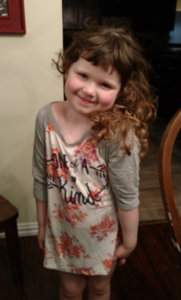 ar, my 4-year old daughter and I were eating dinner in our living room on Valentine’s Day, sharing a beef and broccoli dish from a local restaurant, when my little one choked on a piece of meat. Her airway was completely blocked, and if I had called 9-1-1, there would have been very little chance of the EMTs getting to our house in time to save her life. Instantly, all those years of Red Cross CPR and First Aid training kicked in and I jumped into action, performing the Heimlich maneuver and literally saving my daughter’s life. This Valentine’s Day was a very precious and poignant one, remembering how close I came to losing my little Valentine a year ago. But thanks to the Red Cross, she is still with me and thriving.
ar, my 4-year old daughter and I were eating dinner in our living room on Valentine’s Day, sharing a beef and broccoli dish from a local restaurant, when my little one choked on a piece of meat. Her airway was completely blocked, and if I had called 9-1-1, there would have been very little chance of the EMTs getting to our house in time to save her life. Instantly, all those years of Red Cross CPR and First Aid training kicked in and I jumped into action, performing the Heimlich maneuver and literally saving my daughter’s life. This Valentine’s Day was a very precious and poignant one, remembering how close I came to losing my little Valentine a year ago. But thanks to the Red Cross, she is still with me and thriving.
Those classes were and are provided to the public through our Preparedness and Health & 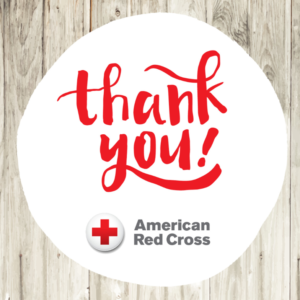 Safety Services teams, including babysitting classes, instructor certification classes, and so, so much more. Are you equipped to save a life in your own back yard, your pool, around your dinner table? You could be! Get into a class and learn how to be an everyday hero to the loved ones around you!
Safety Services teams, including babysitting classes, instructor certification classes, and so, so much more. Are you equipped to save a life in your own back yard, your pool, around your dinner table? You could be! Get into a class and learn how to be an everyday hero to the loved ones around you!
To find available classes, locations, costs, etc., visit us online at redcross.org/takeaclass.
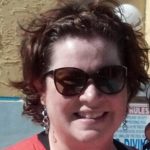 Amy Grace is a native Texan and is serving our community as the Executive Director of the Heart of Texas chapter of the American Red Cross. She has an extensive professional background but is most proud of being a mom to her incredible four-year old daughter and paying forward a legacy of courage, resilience, hope and abundance. She currently resides in Temple with her daughter, two canine family members (Ranger and Silver) and her grandmother.
Amy Grace is a native Texan and is serving our community as the Executive Director of the Heart of Texas chapter of the American Red Cross. She has an extensive professional background but is most proud of being a mom to her incredible four-year old daughter and paying forward a legacy of courage, resilience, hope and abundance. She currently resides in Temple with her daughter, two canine family members (Ranger and Silver) and her grandmother.
The Act Locally Waco blog publishes posts with a connection to these aspirations for Waco. If you are interested in writing for the Act Locally Waco Blog, please email [email protected] for more information.
by Rebecca Edwards
In Waco for Spring Break? You are in luck! There are some wonderful ways you can have some creative fun with your family – no matter what age they are! Here is my personal top 10 list. What would be on yours?
#10 The Dr. Pepper Museum with its Wild West Exhibit – Aside from all the history of Dr. Pepper, there is a great homage to the cowboys and cowgirls that have helped market the soda. Sweet treats in the oldfashioned soda fountain, too. On March 7th, the DPM begins its “summer” hours, meaning it’s open on Monday to Saturday 10am to 5pm and Sunday 12pm to 5pm. Admission is $8 for adults, $5 for students, Seniors & Military $7
#9 Cameron Park Zoo – (Be sure to take advantage of the zoo shuttle – the parking lot fills up quickly.) On Sunday, March 13th, 11am to 2pm, the zoo will host “Spring Forward for Amphibians” with special activities. But the rest of the week will be wonderful to walk the grounds and gaze at our animals living right here in the city! Playgrounds and the gift shop offer the weary some rest. The Zoo is open Monday through Saturday 9 am to 5 pm and Sunday 11 am to 5 pm. Admission is $10 for Adults, $7 for children 412 years old, $9 for Seniors (Children 3 and under are free and Military discounts are offered).
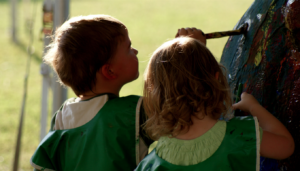 #8 Art Center Waco: GS DeFoore Exhibit, Cookies & Coloring, sculpture trail AND Spring Break Pottery Class – Okay, the Art Center is one of my favorite gems of Waco. Above Cameron Park and the river, the views are spectacular, the grounds (with walkable sculpture trail) are inspiring, and the gallery space is inviting and peaceful. Aside from the permanent structure of the Art Center itself, the goingson inside are also enticing. The GS DeFoore Exhibit just opened and will be up through May 27th. On Wednesday, March 9th, Doreen Plott of Mammoth Creek Pottery will be hosting a pottery class from 9am to noon. (Limited to 10, Registration $50). And on Friday, March 11th, free Cookies & Coloring will be back from 3pm to 5pm to explore the work of Jackson Pollock and eat cookies! What’s not to love??? The Art Center is open Tuesday through Saturday 10am to 5pm. Admission is FREE!!
#8 Art Center Waco: GS DeFoore Exhibit, Cookies & Coloring, sculpture trail AND Spring Break Pottery Class – Okay, the Art Center is one of my favorite gems of Waco. Above Cameron Park and the river, the views are spectacular, the grounds (with walkable sculpture trail) are inspiring, and the gallery space is inviting and peaceful. Aside from the permanent structure of the Art Center itself, the goingson inside are also enticing. The GS DeFoore Exhibit just opened and will be up through May 27th. On Wednesday, March 9th, Doreen Plott of Mammoth Creek Pottery will be hosting a pottery class from 9am to noon. (Limited to 10, Registration $50). And on Friday, March 11th, free Cookies & Coloring will be back from 3pm to 5pm to explore the work of Jackson Pollock and eat cookies! What’s not to love??? The Art Center is open Tuesday through Saturday 10am to 5pm. Admission is FREE!!
#7 Magnolia Silos and Food Trucks – In case you didn’t know, there’s a little HGTV show that has made Waco a destination city. And Magnolia Market at the Silos is its base camp! I like the store and all, but the “park” like feel of the grounds and the beauty of community are what have drawn me to the silos. The food trucks (looking at you, Luna Juice Bar and Club Sandwich) are a great excuse to drop by and have lunch while the kids run and tumble on the astroturf lawn with its old fashioned games. The store and grounds are open Monday to Thursday 10am to 6pm and Friday & Saturday 9am to 6pm. Closed Sunday. Admission is FREE!!
#6 Armstrong Browning Library at Baylor University – This grand library may be an odd suggestion for children on Spring Break, but the current exhibition of the library’s collection of children’s literature is worth checking out. The building itself is a masterpiece of architecture, and the grounds around Baylor are perfect for strolling, biking, or scootering. The library is open Monday through Friday, 9am to 5pm, and on Saturday 10am to 2pm. Admission is FREE!!
#5 THE Waco Hippodrome – If you haven’t checked out the beautiful renovations done to our Grand Old Dame, the Hippodrome is worth a visit. Offering firstrun movies, delightful old favorites, and a delicious menu (you can eat WHILE watching a movie), it should be pretty high on your list. Especially with the free concert coming up on March 7th at 7pm: The Air Force Celtic Band! Advanced tickets are available on the website—for FREE. (Did I mention this concert is free?) The Hippodrome offers lunch Monday through Friday 11am to 2pm, and the kitchen & bar are open Monday through Friday beginning at 5pm and Saturday and Sunday, beginning at 11am (for awesome brunch!). Admission for most movies and showtimes is $5, First run movies in the evening are $8.
#4 Mayborn Museum at Baylor University – Every. Single. Day. The Mayborn has special Spring Break activities planned in the Bill & Vera Daniel Historical Village every single day of the week. Monday is Chore Day, Tuesday is Grinding Day, Wednesday is Planting Day, Thursday is Candle Making, and Friday is Game Day! These activities are only from 1pm to 3pm in the village, with some days featuring a horsedrawn carriage or animals in the village. But if you miss that, don’t worry. The Mr. Potato Head & Tinker Toy exhibit are also worth the visit! Not to mention the chance to see DisneyPixar’s Toy Story in the museum theater at 11am and 3pm every day. AND Mr. Potato Head himself will make an appearance every day at 10:30 and 2:30. Aside from the traveling exhibits and special events, the regular exhibits are what keep our family members to this treasure of a museum. We like to feel small next to the mammoth skull and giant turtle skeleton in the Strecker wing. We like to explore the wonders of light and water and magnetism in the discovery rooms. And the museum store is a favorite spot to spend allowance money! The Mayborn is open from 10am to 5pm Monday through Saturday, with extended hours on Thursdays until 8pm. Open Sunday from 1pm to 5pm. Admission to the traveling exhibit includes regular admission Adults: $10.00, Children(18 months to 12 years of age): $5.00 Seniors (65 years and older): $9.00.
#3 The WacoMcLennan Public Library’s Spring Break Programming – From the time my oldest was a toddler, we have been taking advantage of the FREE programming at the Waco Library. Toddler time, Preschool Storytime, Summer showcases, special interest clubs. There is something for every age child. In fact, there are just too many to list here. Check out the library website for details about the Zooniversity visiting the South Waco Library or the Board Game club at the West Waco Library or the Family Kite Worksop at Central Library (preregister for that one!). And the regular programming isn’t letting up just because it is Spring Break! Toddler Time and Story Time are still happening! Plus, Books! Movies! Audiobooks! Free Wifi and computer use! Get a library card because it will take you places without having to actually travel. I am a HUGE fan. The Libraries are open most days from 10am to 6pm, with each branch having extended hours on certain days. Admission AND Library Cards are FREE!!!
#2 Sightseeing WacoTown’s Public Art – Waco is changing! It is becoming a place of vibrant art and culture—if it hasn’t always been, the cocoon is cracking. I want to encourage anyone to walk or bike along the Suspension Bridge and marvel at the Branding the Brazos sculptures that capture the scenes of the first crossings of our famous bridge. Find the Freedom Fountain at the Waco Convention Center and try to read the word “FREEDOM” in all the languages that surround it. Find our “You look Nice today, WacoTown” mural at 7th & Washington. Seek out our art. Support our artists at galleries like the Art Center of Waco, Anthem Studios, Art Forum, Martin Museum of Art, and Studio Gallery. See what artists have been doing in our city and celebrate! Go to the public art outside ANYTIME. For the art galleries, check their hours. Admission is FREE!!!
And the NUMBER ONE event in Waco during Spring Break is….
#1 FIRST FRIDAY!!! – Okay, so it doesn’t last all week, but it does start on the very first evening of Spring Break: Friday, March 4th! And the event is all over and really all afternoon and into the evening. Something for everyone and a chance (excuse?) to check out new places in town, like the Findery. Or maybe not even new ones—what about spots that have been around but there’s never been a chance to see what they are all about? Use this First Friday as a ticket to explore what downtown has to offer! Different venues have different hours. Admission is FREE!!!
 Rebecca Edwards grew up in West Texas and has lived in Waco for the better part of 24 years. After graduating from Baylor, she married Joel and they have three children. After careers in banking and travel, her titles now include Wife, Mother, Substitute Teacher, Photographer, Arts Enthusiast, and Craft Dabbler.
Rebecca Edwards grew up in West Texas and has lived in Waco for the better part of 24 years. After graduating from Baylor, she married Joel and they have three children. After careers in banking and travel, her titles now include Wife, Mother, Substitute Teacher, Photographer, Arts Enthusiast, and Craft Dabbler.
The Act Locally Waco blog publishes posts with a connection to these aspirations for Waco. If you are interested in writing for the Act Locally Waco Blog, please email [email protected] for more information.
By Christina Helmick
Earlier this month, the Prosper Waco added two new South Waco members to the Community Engagement Council. 1SG (retired) Leonard Montelongo Jr. and Sarah Guajardo, both born and raised in Waco, are grassroots community members who believe that by engaging the community, the Prosper Waco initiative will move forward with the community’s voice guiding the work.
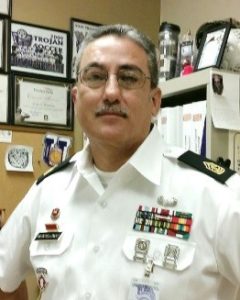 1SG (Ret.) Leonard Montelongo Jr. attended all Waco ISD schools growing up and is a graduate of University High School. He served in the United States Army just shy of 23 years and is currently the Senior Army Instructor for JROTC at University High School. He is a member of the American GI Forum and the American Legion of McLennan County. He earned his bachelor’s degree from National Louis University from McLean, Virginia.
1SG (Ret.) Leonard Montelongo Jr. attended all Waco ISD schools growing up and is a graduate of University High School. He served in the United States Army just shy of 23 years and is currently the Senior Army Instructor for JROTC at University High School. He is a member of the American GI Forum and the American Legion of McLennan County. He earned his bachelor’s degree from National Louis University from McLean, Virginia.
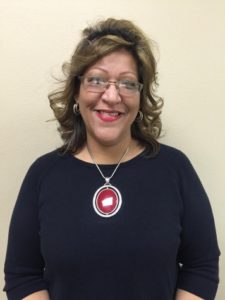 Sarah Guajardo is a lifelong resident of South Waco and graduated from University High School. She currently works as an administrative assistant at the Mercedes Benz of Waco. She received her certificates in secretarial training and medical secretary from McLennan Community College. Sarah currently serves as a member and former secretary of La Benemerita Sociedad Mutualista Mexicana De Jornaleros (Mutualista) and as a member of Mighty Wind Worship Center. While living in South Waco, she has served as president of Southern Little League and as a volunteer for the Heart of Texas Young Marines. Sarah is a proud mother of four and grandmother of two.
Sarah Guajardo is a lifelong resident of South Waco and graduated from University High School. She currently works as an administrative assistant at the Mercedes Benz of Waco. She received her certificates in secretarial training and medical secretary from McLennan Community College. Sarah currently serves as a member and former secretary of La Benemerita Sociedad Mutualista Mexicana De Jornaleros (Mutualista) and as a member of Mighty Wind Worship Center. While living in South Waco, she has served as president of Southern Little League and as a volunteer for the Heart of Texas Young Marines. Sarah is a proud mother of four and grandmother of two.
Both Leonard and Sarah, and the rest of Community Engagement Council, are actively engaging the community through house meetings and various community events. For example, Leonard and Sarah attended University High School’s Bootcamp event to connect with parents and talk with them about Prosper Waco’s Get Help Locally resource guide. The council also participated in the Central Texas Hispanic Chamber of Commerce’s Family Expo event held on Feb. 13. The Family Expo, which had more than 1,500 attendees, gave the Community Engagement Council the opportunity to meet, connect and interact with community members from all over the Waco area. The council is actively planning house meetings, which will allow residents of Waco to join small, intimate conversations to talk about the issues they face in their own community and about how as a community we can work to address the goals of the Prosper Waco initiative.
Needless to say, the Prosper Waco Community Engagement Council is working hard to make sure the community’s voice is guiding the work of the Prosper Waco initiative. If you’re looking for a way to have your voice heard or to get involved in the Prosper Waco initiative, contacting the Community Engagement Council is the way to go! Email [email protected] and someone from the council will email you back as soon as they can. You can also call 254-741-0081 and the Prosper Waco team will connect you to the Community Engagement Council member for the area of Waco you live in.
I’ll end with some thoughts from Ruth Graham, one of Prosper Waco’s East Waco Community Engagement Council members. Her thoughts below reflect on engaging the community in general, and how each of us can keep in mind how to best connect with those we are trying to serve.
“Change is possible. I’ve seen it firsthand. Results are achievable with the right ingredients. Who are we to expect them to change without changing our own mindsets? What are we exhibiting in our speed and body language to this group we’re offering to help? How do we listen to and engage those whom we do not know or possibly fear? Let us start with genuine sincerity. Let us add a heap of acceptance. Let us fill it with diversity. Let us roll in the lovely accents. Let us remix the color styles. Let the ingredients in us inspire the change for the results we desire to achieve.”
We’re social! Follow us on Facebook and Twitter to get the latest and greatest updates on the Prosper Waco initiative, the hard work our community partners are doing for Waco and the great work of the Prosper Waco Community Engagement Council!
 Christina Helmick is the director of communication at Prosper Waco. She is a recent graduate of Baylor University with a BA in Journalism, Public Relations & New Media. Originally she is from Washington, D.C., but has stayed in Waco post-graduation. She is an active mentor at J.H. Hines Elementary School, enjoys spending time with her family and watching Baylor football. Sic ’em Bears!
Christina Helmick is the director of communication at Prosper Waco. She is a recent graduate of Baylor University with a BA in Journalism, Public Relations & New Media. Originally she is from Washington, D.C., but has stayed in Waco post-graduation. She is an active mentor at J.H. Hines Elementary School, enjoys spending time with her family and watching Baylor football. Sic ’em Bears!
The Act Locally Waco blog publishes posts with a connection to these aspirations for Waco. If you are interested in writing for the Act Locally Waco Blog, please email [email protected] for more information.
by Alyssa Holloway
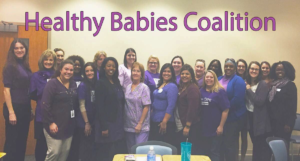 As one of the graduate assistants on the Healthy Babies Coalition in Waco, I have had the amazing opportunity of serving this growing community alongside organizations and agencies devoted to the health of women and children. These agencies truly make up the backbone of Waco. They work hard without the publicity, fame, or acknowledgment they deserve. The Healthy Babies Coalition started from the Healthy Texas Babies Initiative, an initiative of the Texas Department of State Health Services developed to help Texas communities lower their infant mortality rates. Waco is in the top 10% of highest infant mortality rates in Texas, and the Healthy Babies Coalition is determined to fight these terrible odds. Our community initiative includes partnering with agencies to create a plan for inter-conception health information to be provided to clients, encouraging the creation of a reproductive life plan with clients, as well as encouraging clients to see their physicians and enter in to early prenatal care.
As one of the graduate assistants on the Healthy Babies Coalition in Waco, I have had the amazing opportunity of serving this growing community alongside organizations and agencies devoted to the health of women and children. These agencies truly make up the backbone of Waco. They work hard without the publicity, fame, or acknowledgment they deserve. The Healthy Babies Coalition started from the Healthy Texas Babies Initiative, an initiative of the Texas Department of State Health Services developed to help Texas communities lower their infant mortality rates. Waco is in the top 10% of highest infant mortality rates in Texas, and the Healthy Babies Coalition is determined to fight these terrible odds. Our community initiative includes partnering with agencies to create a plan for inter-conception health information to be provided to clients, encouraging the creation of a reproductive life plan with clients, as well as encouraging clients to see their physicians and enter in to early prenatal care.
 One of the members of the Healthy Babies Coalition working on these goals is Nurse Family Partnership (NFP). These loyal nurses of NFP are concerned above all about the relationships between mothers, children, and nurses. They are now performing home visits in Waco for first time mothers who qualify for these benefits. The goals of the partnership are to improve pregnancy outcomes, improve child health and cognitive development, and improve economic self-sufficiency. These nurses want to serve the moms and children of Waco in their home environments where they are the most comfortable. Not only does this eliminate the money and time of traveling for the new moms, but it also allows the nurses to teach and guide moms in an intimate setting through healthy pregnancies, labor, delivery, and motherhood.
One of the members of the Healthy Babies Coalition working on these goals is Nurse Family Partnership (NFP). These loyal nurses of NFP are concerned above all about the relationships between mothers, children, and nurses. They are now performing home visits in Waco for first time mothers who qualify for these benefits. The goals of the partnership are to improve pregnancy outcomes, improve child health and cognitive development, and improve economic self-sufficiency. These nurses want to serve the moms and children of Waco in their home environments where they are the most comfortable. Not only does this eliminate the money and time of traveling for the new moms, but it also allows the nurses to teach and guide moms in an intimate setting through healthy pregnancies, labor, delivery, and motherhood.
As a young mother, Andrea noticed that “There isn’t a class in school that tells you how to raise a kid. Nurse- Family Partnership is like an instruction book that gives you the knowledge and positive encouragement to raise a baby.”
Fathers are just as important as mothers in the pregnancy and child-rearing stages of life, and NFP honors the fathers of these families tremendously. Research shows that families who participate in NFP have a 68% increase in having a father in the household because this program knows the major benefits to fathers and children in that growing relationship.
As of this writing, the nurses in McLennan County plan to start visiting homes in January 2016. They are taking referrals for first time mothers who are due after March 10, 2016 and/or before the end of their 28th week of pregnancy. In addition, mothers must qualify for Medicaid or fall below 185% of the poverty line.
Nurse-Family Partnership of Waco is located at 120 Hillcrest Medical Boulevard #303, phone number 254-202-1130. Visit their website in English and Spanish at http://www.nursefamilypartnership.org/ to hear more personal stories and testimonies of the thankful mothers who have participated thus far and to connect with the program in Waco.
 Alyssa Holloway moved to Waco in August 2015 from Santa Barbara, California and loves her community. She is studying for her Masters in Social Work at Baylor University, and is working with the Healthy Babies Coalition at the Waco-McLennan County Public Health District. She enjoys baking, running, being outside, reading, laughing, going to church, and traveling.
Alyssa Holloway moved to Waco in August 2015 from Santa Barbara, California and loves her community. She is studying for her Masters in Social Work at Baylor University, and is working with the Healthy Babies Coalition at the Waco-McLennan County Public Health District. She enjoys baking, running, being outside, reading, laughing, going to church, and traveling.
The Act Locally Waco blog publishes posts with a connection to these aspirations for Waco. If you are interested in writing for the Act Locally Waco Blog, please email [email protected] for more information.
by Kayla Zollinger
Many people think of Communities In Schools of the Heart of Texas as a school based program where our staff are positioned at campuses throughout the Heart of Texas serving K-12. What many people do not realize is that CIS-HOT also serves youth and young adults who are often referred to as “opportunity youth.” Opportunity youth are typically defined as individuals 16-24 year-olds that are not working or in school. In partnership with Workforce Solutions for the Heart of Texas, CIS-HOT aims to connect with opportunity youth and work with them to achieve their education and employment goals.
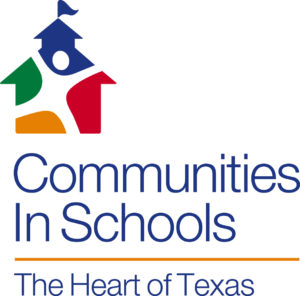 One of the opportunities offered to our 16-24 year olds participants is a Subsidized Work Experience. Through this experience, CIS-HOT hires youth, provides them with new-hire training, and places them in the community at a host-worksite. These host-worksites provide the youth with a job description, daily tasks, and supervise them for 15-20 hours per week for about ten weeks, or up to 300 hours. Youth participating in the Paid Work Experience Program receive an hourly wage paid by CIS-HOT as well as support from an individual Career Coach. Each Career Coach meets with the host employer and participant weekly to discuss the participant’s performance in order to highlight strengths and identify areas of growth to prepare them for future employment success.
One of the opportunities offered to our 16-24 year olds participants is a Subsidized Work Experience. Through this experience, CIS-HOT hires youth, provides them with new-hire training, and places them in the community at a host-worksite. These host-worksites provide the youth with a job description, daily tasks, and supervise them for 15-20 hours per week for about ten weeks, or up to 300 hours. Youth participating in the Paid Work Experience Program receive an hourly wage paid by CIS-HOT as well as support from an individual Career Coach. Each Career Coach meets with the host employer and participant weekly to discuss the participant’s performance in order to highlight strengths and identify areas of growth to prepare them for future employment success.
At CIS-HOT we find that so many of the youth entering our program have a strong desire to work, and want to learn to be reliable employees, but they often need the support of a caring adult to encourage and guide the learning of soft-skills. These youth and young adults are often juggling multiple responsibilities like working toward a GED, attending credit recovery classes, parenting, searching for employment, and even probation. This program offers them the opportunity to attend class, gain job skills, and earn a wage while being surrounded with the CIS-HOT community of support.
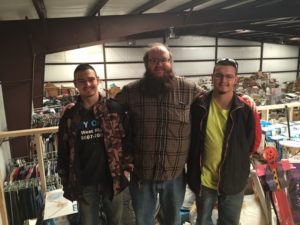 Through this program, we have seen numerous changes in our participants including higher self-esteem, more confidence, greater communication, increased punctuality, and improved initiative. Our team has found that this opportunity to learn, work, and earn a wage has kick-started the participants’ intrinsic drive to be successful. Many participants have now moved on to new permanent employment opportunities, using the work experience as an important resume item, and several have enrolled in post-secondary education. We have seen the work experience ignite confidence in youth and young adults and awaken the realization that their goals are within reach.
Through this program, we have seen numerous changes in our participants including higher self-esteem, more confidence, greater communication, increased punctuality, and improved initiative. Our team has found that this opportunity to learn, work, and earn a wage has kick-started the participants’ intrinsic drive to be successful. Many participants have now moved on to new permanent employment opportunities, using the work experience as an important resume item, and several have enrolled in post-secondary education. We have seen the work experience ignite confidence in youth and young adults and awaken the realization that their goals are within reach.
One of the most integral components of the Paid Work Experience Program at CIS-HOT is the support and investment in the lives of the youth participants by our host employers. Our host employers act as the main supervisors for the youth participants throughout their Work Experience. On a daily basis, these host employers offer professional advice to our participants, and thus doing, contribute to the successful future of these participants. Host employers can be from the public, private, or non-profit business sectors and have the opportunity to hire participants for any open positions following the completion of the Work Experience. Recently, we asked some of our host employers what they would say to other employers in the community about participating as a worksite and here is what they said:
“It is a great experience not only for the student, but also for the employer!”
“I’d say, ‘Do it!’ This program is fantastic for both the student and the employer. To be the first example and somewhat shape and improve a child’s future is an awesome feeling! Both participants walk away feeling accomplished. It’s a Win-Win situation!”
“The CIS Staff is great to work with, and very knowledgeable in what they are doing. The applicants they send us are wanting to change their circumstances.”
 CIS-HOT is so thankful for the numerous employers who are currently hosting participants and who have acted as hosts in the past! You are truly valued and your investment in our youth and young adults will impact them for years to come!
CIS-HOT is so thankful for the numerous employers who are currently hosting participants and who have acted as hosts in the past! You are truly valued and your investment in our youth and young adults will impact them for years to come!
If you are interested in serving as a host employer for the Communities In Schools of the Heart of Texas Work Experience Program or if you would like to recommend a young adult to the program, please contact Kayla Zollinger.
 Kayla Zollinger is the Field Coordinator for the Workforce Innovation and Opportunity Act Program at Communities In Schools of the Heart of Texas. A resident of Waco since 2008, she has earned both a BBA, and an MSW from Baylor University. She is an avid Baylor Football fan with a passion for working with youth and young adults in her community. You can contact Kayla at 254-640-7299 or [email protected].
Kayla Zollinger is the Field Coordinator for the Workforce Innovation and Opportunity Act Program at Communities In Schools of the Heart of Texas. A resident of Waco since 2008, she has earned both a BBA, and an MSW from Baylor University. She is an avid Baylor Football fan with a passion for working with youth and young adults in her community. You can contact Kayla at 254-640-7299 or [email protected].
The Act Locally Waco blog publishes posts with a connection to these Aspirations for Waco. If you are interested in writing for the Act Locally Waco Blog, please email [email protected] for more information.
By Jennifer Alumbaugh, LMFT
I’ve had a few, what I like to call “Job years” in my life, those seasons when the hits just keep on coming and I’ve barely recovered my breath from one loss while I’m learning of the next one.
I had my first Job year when I was 8/9: my parents got divorced, my favorite kindred Aunt passed away, my childhood best friends and neighbors moved away, I moved to a new city and school, and my mother got remarried. That year—actually, that all occurred within a nine month span—left a lot of gaping holes in my 9 year old soul, and aged me a few decades as well.
I went to a support group for kids who experienced loss of a parent via death or divorce and met a friend with whom I became close and stayed friends over the years through high school and a while beyond. She had lost her father to cancer. We talked about loss and grief and connected over understanding the kinds of things at our age many other kids didn’t.
“Be with those who also are grieving. As you tell your stories, you will share an understanding of the heart that is deeper than words.” –Karen Katafiasz
After college I moved to Texas to be a foster mother at a youth ranch. For the first few months I lived in a staff house and was on a 4-day rotation in a house for middle-school age girls. Six months after I moved my life to Texas, I and a few other staff members lost everything in a fire that consumed our living quarters. It was a different kind of loss—of things, material possessions—no people were hurt or killed in the night time blaze. But it left a scar that I still feel today, when I forget and look for that one shawl my grandmother gave me, or those photos from college, or the first quilt I ever sewed. The Red Cross voucher couldn’t replace those things.
Six months after the fire, I was parenting in another home. This time on my own in a house of eight high school aged girls. The girls had just given me my first Mother’s day that Sunday, complete with wildflowers picked on the walk home from church and grilled cheese lunch they insisted on making me and hand written cards. May 15, 2002. Wednesday. Two of my girls and one of the boys from the other house borrowed a friend’s car, skipped afternoon classes, and drove into town. I was told they were going so fast they died on impact, in an instant. That weekend I buried three children in three days.
Last year, I lost several family relationships including contact with my young nieces and nephew who I came to Waco to help raise during my brother-in-law’s deployment. These bonds were severed due to the effects of my brother-in-law’s Narcissistic abuse and other toxic power and control dynamics among family members.
My life has been marked by some profound circumstances of loss and grief. While there have also been extraordinary joys and life scattered throughout, I began learning early on that there is no returning to the way things were, there is only moving forward, with the pain, to create a new normal.
“There will come a time to remind yourself of your reasons for living. You have a future worth enduring for, and you deserve to find a renewed sense of purpose and pleasure in your life.” –Karen Katafiasz
What that looks like is different for everyone. Around the world various cultures and beliefs have a vibrant array of ritual, ceremony, and celebrations to remember the dead, to honor those who have crossed over before the rest of us. For some, solace is found in spiritual practices and the comfort of faith beliefs and communities. For others, peace is sought in living out legacies of those passed on. Some grieve loudly, with wailing and heaving sobs unbridled. Others sit Shiva, quietly contemplating, in their homes. Some wear the clothes of mourning, muted solemn hues; others don vibrant colors celebrating lives lived, joys relished, with light and music and laughter.
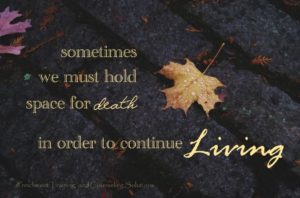 Some losses are private, secret, taboos whispered about in hushed tones and behind closed doors. Some losses are splattered across front-page news, a community outrage, a public nightmare unending. Some losses are respected, others are judged, some are shamed, others are “good-riddanced.” But every loss is someone’s. And I believe we must hold space for death—of a person, a relationship, a dream, a hope, a moment, a creature, an identity—in order to continue living.
Some losses are private, secret, taboos whispered about in hushed tones and behind closed doors. Some losses are splattered across front-page news, a community outrage, a public nightmare unending. Some losses are respected, others are judged, some are shamed, others are “good-riddanced.” But every loss is someone’s. And I believe we must hold space for death—of a person, a relationship, a dream, a hope, a moment, a creature, an identity—in order to continue living.
If you’re like me and you’ve survived a loss or three or many, you’ve also endured the onslaught of usually well-intentioned but so often hurtful sayings and prescriptions shared by those on the outside of our suffering. In retrospect I can appreciate their good intentions, but in the moment, those words strike as swift and deep as arrows and their aching effects can linger for a long while after.
The truth is, there is no right or appropriate way to move through our experiences. The process, as much as our experience, is unique to each of us. What resonates with one, rubs another uncomfortably. What nourishes one, may set back another. There is no timeline, no expiration date, no ordered and linear path out and past grief. We grow familiar with it. Accustomed to the weight and shape of it in our lives. And around this reality, we begin piecing together a new us, a new life, a new rhythm.
 Elizabeth Kübler Ross gave us some language for discussing loss with her classic Five Stages of Grief (denial, anger, bargaining, depression, acceptance), yet many of us—professionally and personally—have come to realize that 1) there are many more than five parts and 2) they seem more like facets or stations at which one may visit multiple times along their journey through loss and grief. Personally, I find myself looking much more like the depiction on the right than any kind of neat, discernable, or graceful movement. (Picture source).
Elizabeth Kübler Ross gave us some language for discussing loss with her classic Five Stages of Grief (denial, anger, bargaining, depression, acceptance), yet many of us—professionally and personally—have come to realize that 1) there are many more than five parts and 2) they seem more like facets or stations at which one may visit multiple times along their journey through loss and grief. Personally, I find myself looking much more like the depiction on the right than any kind of neat, discernable, or graceful movement. (Picture source).
While there is no one formula for expressing grief, there are both healthy and unhelpful ways of coping with our feelings in the wake of loss. As a therapist, life coach, friend, and fellow mourner, I have sat with people of all ages, beliefs, cultures, and backgrounds through some of the darkest moments in life. I’ve sat with myself through them. In my experience, the most harm we can do is to ignore the feelings and to avoid talking about it. I know. It is scary and difficult and painful. Sometimes our losses shake and shatter everything we have come to believe, and in our grieving, we must rebuild what was razed to the ground.
I also know the beauty that can come from sharing the process with others—in therapy, in coaching sessions, in support groups, in creative outlets—we may find that in those moments when we feel we have been left with nothing, our words offer a light and a hope to another. And out of nothing, we find, a resilient something. There can be profound healing in a validating, “me too” of another sitting with us on our mourning bench. If you are finding yourself in this place, whether it is with a pastor, rabbi, elder, priest, counselor, life coach, friend, support group, mentor, therapist, or other trusted ally, I encourage you to seek the companionship of others along your journey through grief, loss, and finding a new normal. It is one path you don’t have to walk alone.
Resources:
- Holding Space – an ongoing, weekly grief and loss support group @ Enrichment Training & Counseling Solutions. Saturdays (March 5th) 10a-11:30am. Includes learning, creative projects, and guided discussion. Facilitated by Jennifer Alumbaugh, MS. Register here.
- GriefShare 12–week groups
- Providence Healthcare Network Support Groups
 Jennifer Alumbaugh, MS is a Licensed Marriage and Family Therapist providing clinical and professional development consultation services at Enrichment Training and Counseling Solutions. She has extensive experience working with adolescent and adult survivors of psychological and spiritual abuse, trauma (sexual violence, childhood trauma, interpersonal violence); and complex PTSD. These, along with grief and loss work are her areas of specialization. Jennifer practiced as a mental health clinician throughout Los Angeles County working with children, youth, and their families from 2007-2012. In Central Texas, Jennifer has worked as a Site Coordinator with Communities in Schools of The Heart of Texas at G.W. Carver Middle School; as an independent consultant and professional development trainer; and conference speaker. In 2016 Jennifer created an implemented a therapeutic creative writing program, Brave Young Voices, at Klaras Center for Families and at the Texas Juvenile Justice Department correctional campus at Mart, TX. She may be reached at: [email protected] or 254-405-2496.
Jennifer Alumbaugh, MS is a Licensed Marriage and Family Therapist providing clinical and professional development consultation services at Enrichment Training and Counseling Solutions. She has extensive experience working with adolescent and adult survivors of psychological and spiritual abuse, trauma (sexual violence, childhood trauma, interpersonal violence); and complex PTSD. These, along with grief and loss work are her areas of specialization. Jennifer practiced as a mental health clinician throughout Los Angeles County working with children, youth, and their families from 2007-2012. In Central Texas, Jennifer has worked as a Site Coordinator with Communities in Schools of The Heart of Texas at G.W. Carver Middle School; as an independent consultant and professional development trainer; and conference speaker. In 2016 Jennifer created an implemented a therapeutic creative writing program, Brave Young Voices, at Klaras Center for Families and at the Texas Juvenile Justice Department correctional campus at Mart, TX. She may be reached at: [email protected] or 254-405-2496.
The Act Locally Waco blog publishes posts with a connection to these Aspirations for Waco. If you are interested in writing for the Act Locally Waco Blog, please email [email protected] for more information.
(Note: This is the first installment of what is intended to be an on-going series on financial literacy. Two of the Prosper Waco goals have to do with accumulating wealth: (1) Reduce the percentage of Waco-area households living without three months’ worth of savings if they were not able to work. (2) More than 50 percent of Waco households will have a net worth above $15,000. Our hope is that this series will help move our community towards accomplishing these goals both by sharing information about some of the challenges, complexities and practicalities of managing finances. — ABT)
by Phil Oliver
I write this blog NOT as a financial advisor but as a Financial Coach. The difference is not about money, but about relationships. As a coach over the past 8 years working with hundreds of individuals as well as churches and non-profits, I have observed many financial patterns both healthy and unhealthy that continue to impact valued relationships in peoples’ lives. Some of these patterns contribute to financial freedom, others to financial bondage. So, I offer to you in this blog series, my personal approach to helping promote financial freedom in our Waco community, as well as some of the observations, patterns, and choices I have seen that lead to financial freedom.
First, I must admit that this discussion will not simply be about money. Many components of a person’s ability to use money are bound and greatly impacted by the valued relationships in their lives. This is why I am a Coach and not an advisor.
The idea of living financially free is indeed a universal pursuit; however, successfully arriving there is highly complicated because it is not really a hunt for more but an understanding of contentment. This then gives birth to true freedom.
If I asked you, the reader, “How much money do you need to solve your financial issues?” No matter how the answer comes out verbally, it is usually summarized by, “just a little bit more.”
This answer is ultimately the telling symptom of our society.
Many believe that money is the complete answer to freedom and happiness, but I have found, and try to lead others to discover, that contentment with money is the real issue and that valued relationships drive that contentment impacting their finances on many levels. The guided pursuit of financial freedom then becomes a consideration, identification, and even discovery of patterns and choices in finances.
I have coached those are struggling just to make ends meet at or below the federal poverty, all the way to those who have substantial trust funds. The underlying reason for their financial frustration is…wait for it…they spend more than they make.
As a coach, I do not give financial advice, condemn, or convince. I simply listen to their financial goals and stories and then share information and patterns for them to consider.
I intentionally reframe the whole budget approach because most households who are struggling with finances…and life…don’t believe they have anything to “budget.” I call my approach for thinking about finances “FLOW.” My FLOW plan approach is totally dependent on the goal(s) that the person (and household) are committed to work toward to give them a sense of accomplishment with finances. I have consistently found agreement that they do have a FLOW of money and resources IN and OUT, and that right now something is NOT working for them.
My goal in a FLOW meeting is then to allow the “client” to authentically look at their FLOW and decide what they might want to change about their FLOW to achieve their current financial goal(s).
The entire process and conversation centers around the financial goal(s) for their household because of the relationships involved and the sacrifice that will be required of all participants once their REAL IN and REAL OUT is determined.
The secondary conversations occur after a deficit is found. This usually gives way to a discussion over personal spending habits and then moving to mutual sacrifice rather than simply self-sacrifice on the part of one individual. This is where EVERYONE in the household is encouraged to participate in the FLOW conversation and the process. I have found this to be critical for future success!
Finally, the goal-driven discussion will ultimately lead to possible changes and action steps that could be attempted or practiced based on past patterns and habits. I share my personal experiences, research, and experiences of many others to give each client ideas and reasonable steps to consider taking toward their financial goal(s). These self-determined changes then become the basis for their personal ACTION STEPS. I then continue the coaching by encouraging them to courageously practice these steps and let me know how they work——or don’t work. Both form the basis for continued, meaningful progress.
In my next blog, I will share how certain loans—payday loans, auto title loans, and even student loans—contribute to financial bondage for many in our Waco community.
 Phil Oliver is a retired educator. He is an independent Financial Coach, active mentor, and community activist. He has spent the last 8 years empowering individuals and families to take charge of their finances through his FLOW system. He is active in many community efforts to grow financial literacy and responsibility including Prosper Waco and Citizens for Responsible Lending. He consults with many local organizations to teach and inspire their efforts to empower clients in personal finances. You can contact him at: [email protected]
Phil Oliver is a retired educator. He is an independent Financial Coach, active mentor, and community activist. He has spent the last 8 years empowering individuals and families to take charge of their finances through his FLOW system. He is active in many community efforts to grow financial literacy and responsibility including Prosper Waco and Citizens for Responsible Lending. He consults with many local organizations to teach and inspire their efforts to empower clients in personal finances. You can contact him at: [email protected]
by Diego Loredo
Trying to decide what college to go is intimidating. While I was at A.J. Moore Academy, and later University High School, I never really thought about college and what I wanted to do with my life. It wasn’t until senior year that I actually started thinking about it.
Senior year was hectic, and it was hard for me to figure out what I wanted to do. My mind was filled with all kinds of things: paying senior dues, filling out scholarships, applying to colleges, and other things outside of school. I eventually decided that I wanted to major in journalism and be a news reporter. I’ve always kept up with the news and I loved to write so I figured it would be a good choice for me.
After I figured out my major, I ended up applying to three colleges: Texas State University, University of Texas at Arlington, and University of North Texas. UTA was originally my first choice and I was planning on visiting the campus, but then I found out about UNT Preview, which was scheduled for November. UNT Preview is an event that invites high school seniors to take a campus tour and explore the different facilities available at UNT. So I ended up going with my mom to take a campus tour. It was cold, but I fell in love with the campus and upon leaving I knew that UNT was the college for me.
For the rest of senior year, I was just preparing myself for freshman year. I filled out my FAFSA, I won the Brazos Education Foundation Scholarship, completed my dual credit courses, etc. Before I knew it, I graduated from UHS and was already starting my freshmen year at UNT. I ended up being roommates with a good friend of mine. That made it easier to get used to the fact that I was in college!
Freshman year flew by. I took mostly basics and journalism classes. I learned so many things about myself as freshman year went by. I made new friends, experienced new things, and have matured more. I ended up switching from news writing to public relations because I found out that news writing wasn’t really for me, despite being so excited for it in high school. Public relations is a lot more interesting to me, and to be honest I did it for the money.
Now I’m a sophomore living in an apartment with three other high school friends. I’ve taken numerous PR classes, I’m working with a nonprofit, and have been building up my resume to prepare me for after college. There’s only three more months before sophomore year ends, even though technically I’m a junior based on my credits. During the summer I plan on doing an internship, though I’m not sure where yet. My plan is to do an internship with FC Dallas, an MLS team that is offering summer internships for college students, but if that doesn’t work out then I will probably do an internship with a nonprofit in Denton or Waco.
Although it’s been an extremely bumpy road, I’m glad I chose UNT and I highly recommend it for anyone who wants to go to college. It’s great for journalism and PR students as well as for engineering and music. I’m continuing to learn new things as each new day passes by and I’m just trying to enjoy every little bit before I start my career in public relations.
 Diego Loredo is a sophomore at the University of North Texas. He is majoring in public relations. He graduated from University High School in 2014. Although he is still not quite sure what exactly he wants to do, he thinks he wants to work somewhere in sports PR (preferably soccer or college football). His hobbies include playing soccer and golf. He is 19 years old.
Diego Loredo is a sophomore at the University of North Texas. He is majoring in public relations. He graduated from University High School in 2014. Although he is still not quite sure what exactly he wants to do, he thinks he wants to work somewhere in sports PR (preferably soccer or college football). His hobbies include playing soccer and golf. He is 19 years old.
The Act Locally Waco blog publishes posts with a connection to these Aspirations for Waco. If you are interested in writing for the Act Locally Waco Blog, please email [email protected] for more information.
(The Heart of Texas P-20 Council includes representatives from K-12 education, higher education and employers. They meet regularly to help coordinate efforts to launch our young people into productive lives as workers and citizens. This post is one in a monthly series of posts intended to share information about the work of this important group in our community. For more posts in this series, click here: P-20 education.)
by Christine Holecek
What is Labor Market Information (LMI)? Some people believe the LMI is largely made-up information. But it is actually information that is pulled from premier data sites. National data is found at the bureau of labor and statistics http://www.bls.gov. State data is found through the Texas Workforce Commission, Tracer 2 website http://www.tracer2.com. Labor Market Information is broken down in codes. The industry codes are called NAICS, Occupational Codes are called SOC, and Training Codes are referred to as CIP.
NAICS, the North American Industry Classification System, is the standard used by Federal agencies in classifying businesses for collecting, analyzing, and publishing statistical data related to the U.S. business economy. SOC, Standard Occupation Classification – used by Federal agencies to classify workers into occupational categories for collecting, calculating, disseminating data. Workers are classified into one of over 820 occupations. Occupations are combined to form 23 major groups, 96 minor groups, and 449 broad occupations. Each broad occupation includes detailed occupation(s) requiring similar job duties, skills, education, or experience. CIP, Classification of Instructional Programs – used by the National Center for Education Statistics to collect, collate, analyze, and report full and complete statistics on the condition of education. The CIP functions as a taxonomic scheme to support the tracking, assessment, and reporting of fields of study and program completion activity.
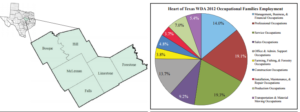 What does the demand for talent look like in the HOT Workforce Area? Waco is considered the Metropolitan Statistical Area for Heart of Texas (HOT) Workforce Solutions. LMCI analysts and users are particularly interested in K-12 educational programming because it is a pipeline to future employees. A list of targeted occupations can be found at http://www.yestoyouth.com/careers.html. Careers from Aviation to Welding can be found on the targeted occupation list. In demand career clusters include: Transportation, Manufacturing, Health Care, Business, Information Technology, Law and Public Safety. Below is the occupational projections from the Heart of Texas which can be found at http://www.tracer2.com/admin/uploadedPublications/2031_13_HeartOfTexas_2012-2022.pdf
What does the demand for talent look like in the HOT Workforce Area? Waco is considered the Metropolitan Statistical Area for Heart of Texas (HOT) Workforce Solutions. LMCI analysts and users are particularly interested in K-12 educational programming because it is a pipeline to future employees. A list of targeted occupations can be found at http://www.yestoyouth.com/careers.html. Careers from Aviation to Welding can be found on the targeted occupation list. In demand career clusters include: Transportation, Manufacturing, Health Care, Business, Information Technology, Law and Public Safety. Below is the occupational projections from the Heart of Texas which can be found at http://www.tracer2.com/admin/uploadedPublications/2031_13_HeartOfTexas_2012-2022.pdf
How does LMI meet the need of CTE Students? LMI Matters! It aims to help develop awareness of labor market information (LMI) and to show how it can be used effectively. It is for anyone who is helping adults or young people to explore opportunities for work or further learning. Our K-12 school system is training a future workforce that helps with the recruitment and retention of employers in our region. The HOT P-20 system includes pre-K through career as the pipeline of students that move on to post-secondary after high school graduation. The Greater Waco Chamber of Commerce has identified a talent pool of future employees and encourages training the following targeted industries: Advanced Manufacturing, Aerospace and Defense, Supply Chain Management, Health Care, Professional and Financial Services. Independent School Districts need to focus on the Labor Market Information and the targeted industries to ensure that we prepare our students today for jobs needed by tomorrow’s employers.
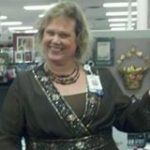 This Act Locally Waco blog post was written by Christine Holecek. Christine is an Education Specialist at Education Service Center Region 12 in Waco. She has worked in the area of Adult Education and Career & Technical Education for the past 25 years. She earned an AAS degree from MCC, a BAAS and Master’s Degree from the University of North Texas and is currently enrolled in the Doctoral Program in Educational Leadership and Policy Studies at Tarleton State University.
This Act Locally Waco blog post was written by Christine Holecek. Christine is an Education Specialist at Education Service Center Region 12 in Waco. She has worked in the area of Adult Education and Career & Technical Education for the past 25 years. She earned an AAS degree from MCC, a BAAS and Master’s Degree from the University of North Texas and is currently enrolled in the Doctoral Program in Educational Leadership and Policy Studies at Tarleton State University.
The Act Locally Waco blog publishes posts with a connection to these aspirations for Waco. If you are interested in writing for the Act Locally Waco Blog, please email [email protected] for more information.

